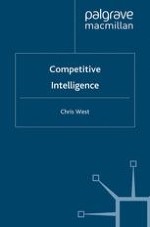2001 | Buch
Über dieses Buch
To beat your competitors you must know exactly what they are doing. It is impossible to put together a successful competitive strategy if you are unsure what your competitors are doing, what they plan to do or even who your competitors really are. As markets evolve even more rapidly and companies adapt their plans much faster, the demand for competitive intelligence has spiralled. Christopher West, an expert in the field, shows you how to collect, analyse and use competitive intelligence from a variety of sources, including the internet, and change your competitive strategy accordingly.
Anzeige
